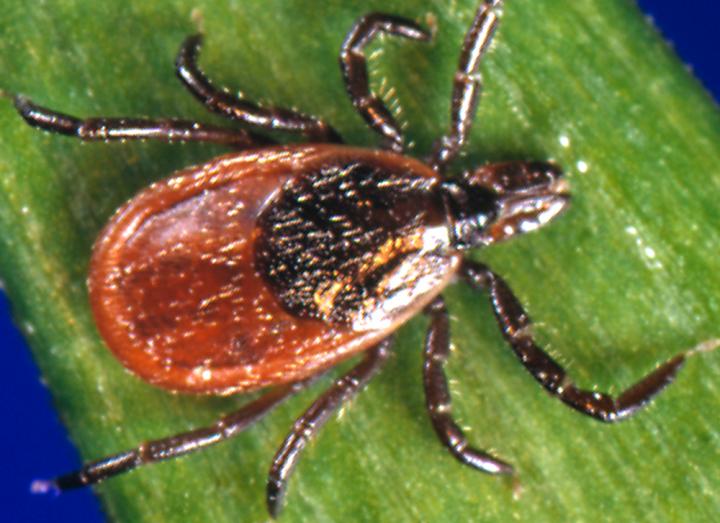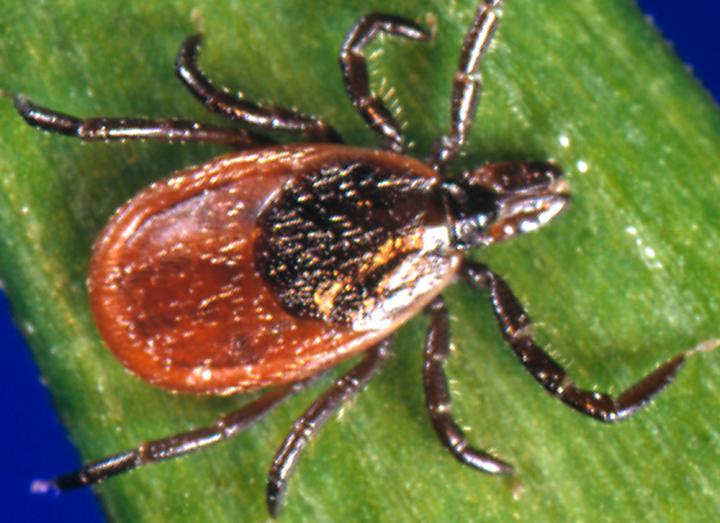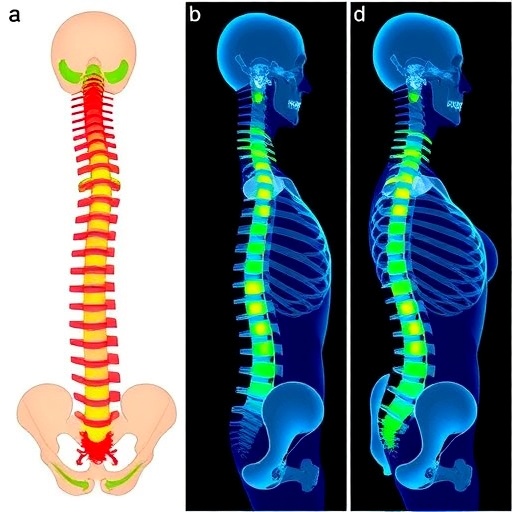
Dr. Lars Eisen and Marc Dolan of the U.S. Centers for Disease Control and Prevention have reviewed decades of scientific literature on the effectiveness of various methods of preventing bites and controlling ticks that transmit Lyme disease. Their findings are published in the Journal of Medical Entomology.
"One of the most important outcomes from this review of the existing evidence base was to clarify the outstanding knowledge gaps, and they are substantial," Eisen said. "The challenges are great, but we are working hard to define the best way forward to close knowledge gaps and generate the critical data needed to provide evidence that certain single or integrated methods do indeed reduce human bites by blacklegged ticks and Lyme disease."
The blacklegged tick (Ixodes scapularis) carries and transmits a bacterium called Borrelia burgdorferi to humans, causing Lyme disease. The disease is usually spread to humans by bites from nymphal ticks (as opposed to larval or adult ticks), so Eisen and Dolan focused on studies concerned with host-seeking nymphs.
Methods for preventing Lyme disease include preventing bites, controlling tick populations, and controlling the populations of other animals that ticks feed on.
Effective methods of preventing bites include wearing long-sleeves, socks, shoes, and some form of insect repellent. Clothing can also be treated with permethrin, an insecticide that kills ticks.
Homeowners can keep ticks out of their backyards through landscape management, insecticide applications, and suppression of tick hosts such as deer and small mammals, especially white-footed mice (Peromyscus leucopus). Landscape management options include removing leaf litter, which can reduce the abundance of host-seeking nymphs by nearly 80 percent, and burning vegetation. Since ticks tend to be more abundant around the edges of yards or in wooded areas surrounding yards, barriers made from substances like gravel or wood chips may prevent ticks from entering a yard, but more research is needed about the specifics.
Certain pesticide applications show promising results, according to the authors, but the efficacy depends on the pesticide and method of application.
Targeting the hosts of the blacklegged tick can also reduce tick numbers. Controlling deer populations and/or treating deer with acaricides (pesticides that kill ticks) can significantly reduce blacklegged tick populations. Likewise, treating white-footed mice with acaricides can be effective. One method involves supplying mice with cotton balls that have been treated with permethrin, which is applied to the mice when they use the cotton as nesting material.
###
The full article, "Evidence for Personal Protective Measures to Reduce Human Contact With Blacklegged Ticks and for Environmentally Based Control Methods to Suppress Host-Seeking Blacklegged Ticks and Reduce Infection with Lyme Disease Spirochetes in Tick Vectors and Rodent Reservoirs, is available at http://jme.oxfordjournals.org/lookup/doi/10.1093/jme/tjw103.
The Journal of Medical Entomology is published by the Entomological Society of America, the largest organization in the world serving the professional and scientific needs of entomologists and people in related disciplines. Founded in 1889, ESA today has more than 7,000 members affiliated with educational institutions, health agencies, private industry, and government. Members are researchers, teachers, extension service personnel, administrators, marketing representatives, research technicians, consultants, students, and hobbyists. For more information, visit http://www.entsoc.org.
Media Contact
Richard Levine
[email protected]
301-731-4535
@EntsocAmerica
http://www.entsoc.org





